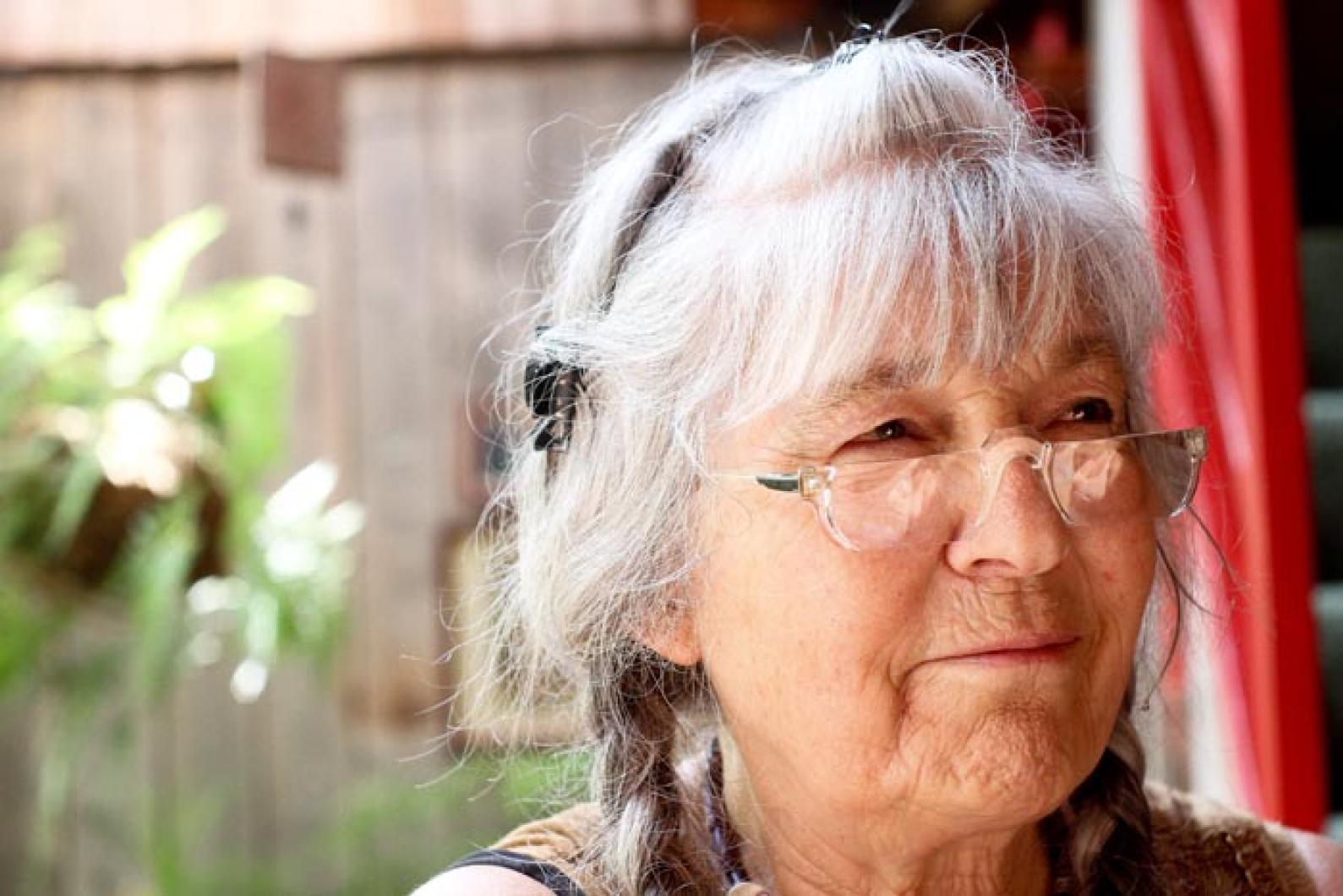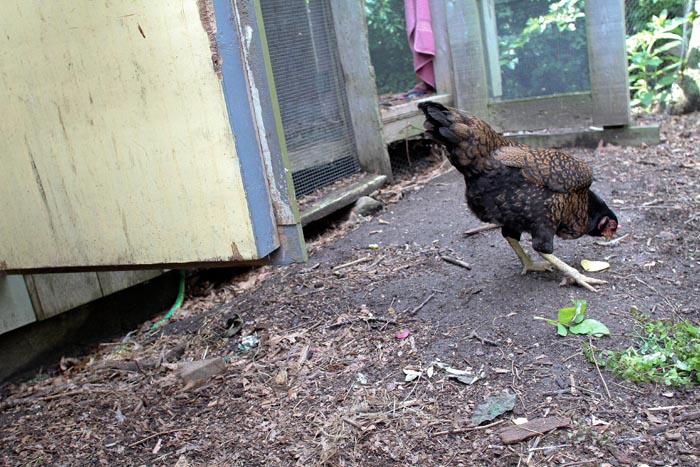Anna Edey stooped over one of her many wineberry bushes at her West Tisbury home Saturday afternoon, plucked one of the raspberry-like wild berries and popped it into her mouth.
“What a treat,” she said. “They have no shelf life, so you have to pick them right off the bush.”
Unlike her wineberries, Anna Edey has plenty of staying power. Arguably the mother of the sustainable food movement on the Vineyard, her Solviva farm and solar greenhouse was one of the first places here where food was grown year-round. Many Islanders remember making the trek there in the dead of winter to buy bags of fresh salad greens with their signature nasturtium flowers, and eggs from her hens that also lived in the greenhouse, their manure generating heat to warm the place along with the sun.
For the past two years Ms. Edey has been working on a new book to follow her first book, Solviva, How to Grow $500,000 on One Acre and Peace on Earth. Considered by many Vineyard growers to be a bible of sustainable and organic greenhouse growing, the book tells the story of Solviva and includes designs for the greenhouse and sustainable wastewater system she has developed over the years.
“People need to understand how dire our situation is,” she said, seated at her kitchen table, above a lower-level greenhouse where plants thrive.
“The purpose of my book is to provide solutions . . . [and] total proof that the solutions that I’m talking about are absolutely real,” she said
The book’s “solutions” include how to grow food sustainably with no pesticides or harmful chemicals and how to alter irrigation practices by using 75 per cent less water.
The technologies are all in place, Ms. Edey said. In her backyard she has built a concrete example of how energy efficiency, food production and living quarters can be incorporated into a single structure, heated by the sun.
She has done some simple math to support her theories. The original Solviva greenhouse on 1/13 of an acre provided 250 Vineyarders with five full servings of salad greens per week, year round. Ms. Edey calculates that with a one-acre greenhouse she would be able to feed 1,500 to 2,000 people. Ten acres of greenhouses would feed the year-round Island population of 16,000 people. Each salad serving would cost about $1.
She will include plans in her new book.
“Most people think this stuff is a total hoax, pie in the sky, so in this book I’m just going to lay out the facts,” she said. “This is what I did, me, with no degrees whatsoever, no letters after my name. I went ahead and took the bull by the horns and said maybe we can do this and maybe we can do that.”
She thinks the amount of food produced on the Island is nothing compared to what it could be.
“There’s almost nothing in the winter, all you have to do is go to the markets and see how much imported food there is,” she said. “Do you think even 10 per cent of it is local? I doubt it. You might wonder why is that — is it because people don’t want to buy it or people aren’t producing enough? I don’t really know. The salad greens I’d produce would be higher quality than anything you’ve seen. I know, because I did it,” she added.
She started Solviva in 1984. After nine years she faced a decision: Continue developing her business or use her experience to teach others. She chose the latter, a project that continues today with lectures and writing.
“The [original Solviva] greenhouse was energy self-sufficient, no fuels whatsoever, producing the highest food per square foot that had ever been produced in any kind of environment, indoor or outdoor,” she said.
Ms. Edey is not patenting any of her designs; instead she says she wants to create a transparent learning process for all.
She hopes people contact her with questions (her e-mail address is solviva@vineyard.net; the telephone is 508-693-3341).
“People have got to do this. I would hope that I would have the chance to help people really do it right,” she said. “I hope people will have the wisdom to take me on as a consultant. We want successful examples of these. We don’t want any failures. We can’t afford failures any more. We are at a point of now or never, if we don’t shape up we’re out of here,” she said.
One of her loftier ambitions is to build a 100 per cent fossil fuel-free, solar-powered school. In her vision for this school, students would work in every aspect of food production from the gardens to the kitchen. Everything from how to make yogurt to seeding new plants would be part of the curriculum.
It’s part of her broader vision for people to enjoy the art of living again, something she thinks people have lost touch with.
“They’d have a chance to fall in love — this is not dirty, it’s just dirt. It’s marvelous stuff,” she said rubbing her fingertips together as if running soil through her hands. “To be able to look at the miracles that are happening . . . to do a school like that with no fossil fuels, no pesticides and total student involvement in learning the art of living, that’s one of my dreams.”
Farm Forum
The Martha’s Vineyard Farm Project will hold a public forum to discuss plans for the purchase of the former Thimble Farm property. The meeting is August 2 at 7 p.m. at the new Agricultural Hall in West Tisbury. The project envisions raising money to buy the farm and ensure that it remains in food production permanently. The Sheriff’s Meadow Foundation, Martha’s Vineyard Agricultural Society and Whippoorwill Farm are all involved in the project. All are welcome at the meeting.






Comments
Comment policy »